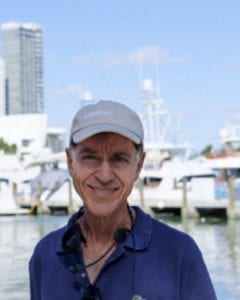|
Getting your Trinity Audio player ready...
|

Miami, the Magic City, is poised to celebrate its 125th birthday this July, and the city and county’s small history community is working with great enthusiasm toward that day, July 28, marking this milestone, with plenty of events and observances scheduled for the months ahead.
One hundred twenty-five years earlier, Miami, specifically the City of Miami, was transformed, seemingly overnight, from a barren wilderness to a promising city of some 700 to 800 residents. While many of us are aware of the tremendous growth and development of the City of Miami following its incorporation, few know little or anything of its origins in 1896. This and subsequent installments of our history column will explore that singular event in Miami’s history as well as its immediate aftermath.
As difficult as it is to imagine, the Florida state population census for 1895 found in the future City of Miami’s, or at least the area on both banks of the Miami River near its mouth, just nine residents. In fact, Miami was not even the official name of the area in that census; instead, the area representing today’s City of Miami came under the title of the Fort Dallas Precinct, a reference to the forts by that name that hugged the north bank of the Miami River during the Indian Wars of the mid-nineteenth century. Those nine residents, incidentally, were members of the Tuttle and Brickell families. We should also note that homesteading communities in other parts of today’s Miami-Dade County, though small in numbers, far exceeded the tiny population residing near the mouth of the Miami River.
Although few were aware of the changes that beckoned, events and personalities that would radically transform the settlement were already coming together in 1895. Two great freezes in 1894-1895 destroyed farm crops as far south as today’s Palm Beach County, but Miami and other portions of southeastern Florida were spared. Julia Tuttle, an ambitious, driven widow who lived on the north bank of the Miami River in the old Fort Dallas complex, dreamed, however fancifully, of a great international city arising along that waterway, as well as Biscayne Bay. Julia used the freezes to persuade Henry M. Flagler, a multimillionaire Gilded Age prince from his partnership with John D. Rockefeller in Standard Oil, to extend a rail line he was building along Florida’s east coast to Miami. The freeze helped move up his timetable, since the oil mogul had planned, since the early 1890s, to extend his rail, known by 1895 as the Florida East Coast Railway, to Key West as part of a burgeoning transportation and resort empire he had been assembling since the 1880s.
In the aftermath of the freeze of February 1895, Julia Tuttle met with James E. Ingraham, one of Flagler’s top lieutenants and an acquaintance of hers from her days in Cleveland. Twenty-five years after this pivotal meeting, Ingraham, in a talk before the Miami Woman’s Club, recalled his visit to Miami following the freeze. “I found, at Lemon City, Buena Vista, Miami, Coconut Grove and at Cutler (farming communities in Dade County), orange trees, lemon trees and lime trees blooming or about to bloom without a leaf hurt,” he remembered. “There had been no frost there. I gathered up a lot of blooms from these various trees, put them in damp cotton, and after an interview with Mrs. Tuttle and Mr. and Mrs. Brickell of Miami, I hurried to St. Augustine where I called on Mr. Flagler.”
In the next installment of this column, we will learn of this pivotal meeting between Ingraham and Flagler and the resultant steps leading to the birth of modern Miami.





